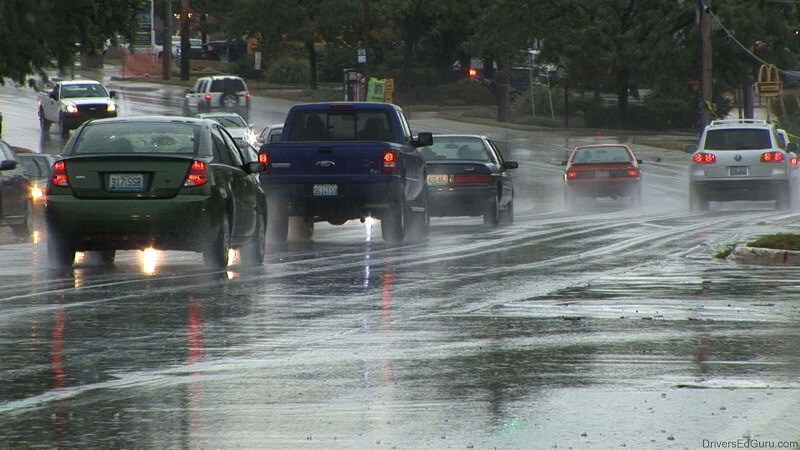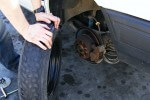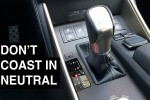Car Care & Maintenance · Featured Articles · The African Autos
Skid Control; Tips for Driving in the Rain
Driving in the rain is dangerous even for experienced drivers. The grip is poor and vehicles slip when the surface is wet or slippery. This article expounds on some of the great tips that can help control skidding.
Journey Kick-Off

It is risky driving in the rain. Care should be taken during such conditions.
Image Source: www.driversedguru.com
Always it’s recommended that you check on your tires before you start the journey to ensure that they are inflated. The correct air pressure is specified by the manufacturing firm and listed in the owner’s manual, and the number listed on the tire side is not the recommended pressure for the tire. Also, it is advisable to check the air pressure at least once on a monthly basis. Often, check the tire tread depth, tires with deeper threads tend to firmly grip the road surface and thus chances of skidding are limited.
Secondly, it is advisable to slow down when it is raining since when water mixes with grime and oil on the road creating the surface tends to be slick, a condition that easily facilitates skidding. Know how to recover from skids because they occur even to serious and trained drivers. When your vehicle skids do not press on the brakes and do not press emergency brakes if you have an anti- locking system (ABS) instead apply steady brakes and steer the vehicle on the direction of the skid.
Maintain Your Track
Basically the distance between the cars ahead should be observed, wet-weather driving calls for maximum control accelerator, brake, clutch, and steer should be observed when you start a journey in rain the shoes will be wet and slip off the pedals proper matting is advised before engine start. Always drive in the same tracks of a car in front whenever possible. Take your foot from the accelerator and avoid braking; ensure the headlights are turned off even in light rain, this important to the vehicles behind; thus they can see you better.
Heavy Rains
When heavy rain falls, it’s good to stop because rains overload the wipers thus continuous flow of water over the screen just pack the car and chill for the rain to ease up its good to stay in protected areas and on the roadside is the only option keep your headlights on and hazards to warn other road users.
Rain Makes Roads Wet
Driving on wet roads is very difficult. Drivers should take care for the first half-hour after it begins to rain.
Cloudy Weather Reduces Visibility
When the weather is dull and raining, take extra caution when passing other vehicles.
Dry Your Brakes after Driving in Stagnant Water
If you drive through deep standing water enough to get your brakes shoes wet, slowly apply the brakes in order to dry them.






